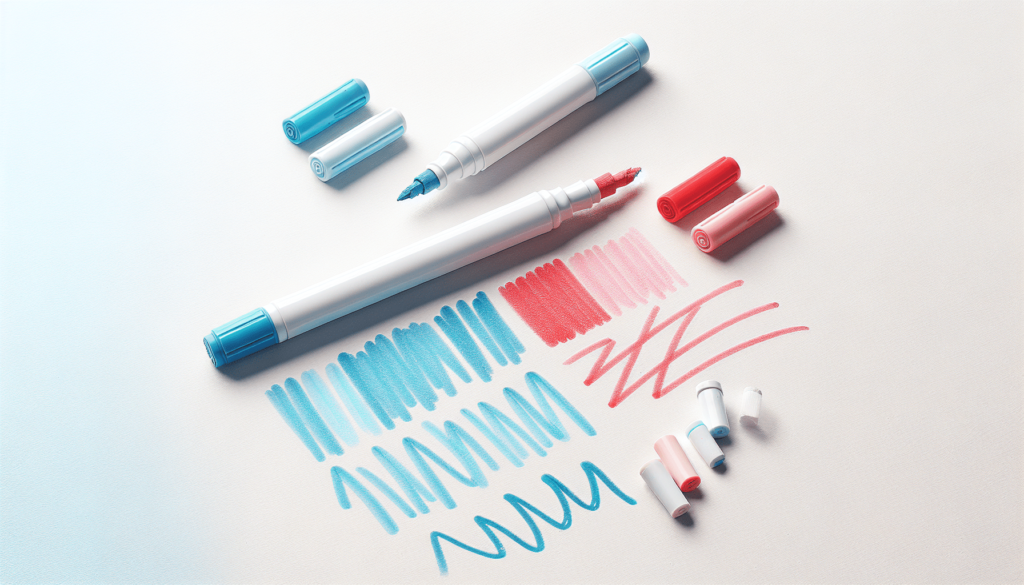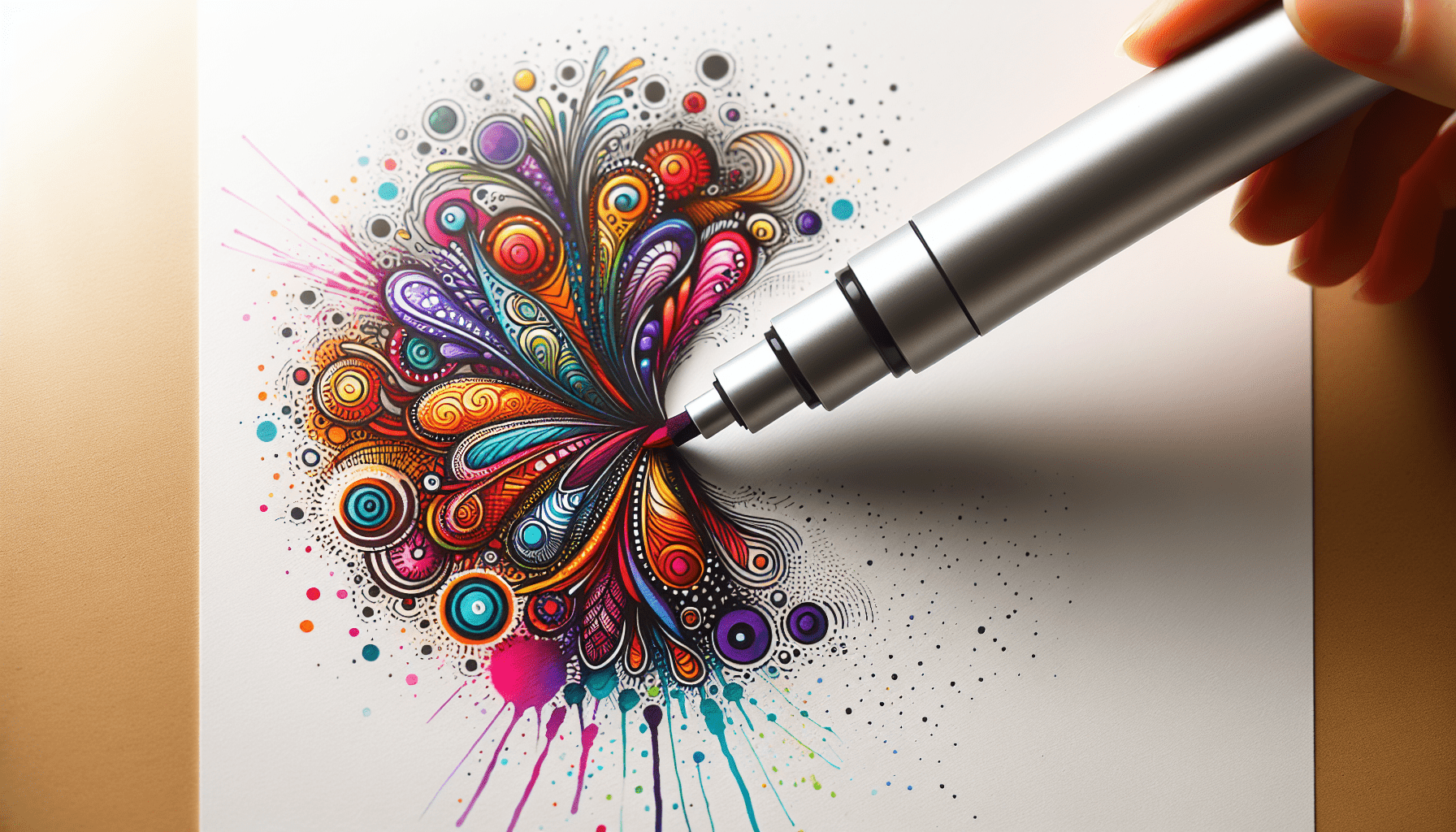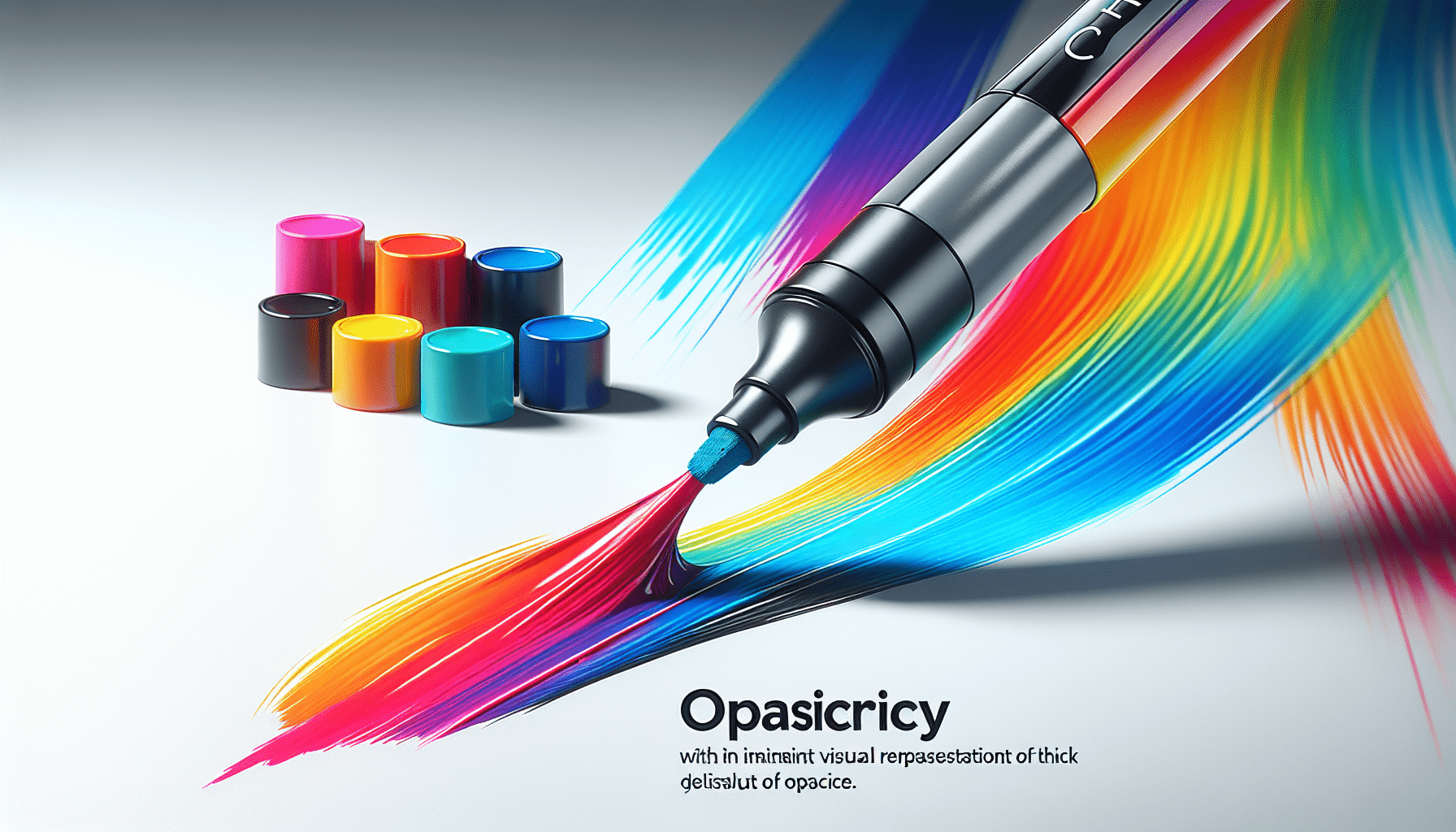Have you ever found yourself in a situation where you need to decide between using a paint marker and a chalk marker? Decisions like this come up more often than you might realize, and choosing the correct tool can make a significant difference in your project’s outcome. By understanding the strengths and applications of both paint markers and chalk markers, you can make an informed choice that suits your needs best.
Understanding Paint Markers
Paint markers, also known as paint pens, offer a versatile and durable option for various artistic and practical applications. Understanding the nature of these markers can help you decide if they are a suitable choice for your project.
Composition and Mechanism
Paint markers contain a highly pigmented, opaque paint that is usually oil- or acrylic-based. The paint is encased in a pen and dispensed through a valve-activated tip. When you depress the marker’s nib, the paint flows out and provides coverage.
Surfaces and Applications
Paint markers are ideal for use on a wide range of surfaces:
| Surfaces | Examples |
|---|---|
| Porous Surfaces | Canvas, paper, wood |
| Non-Porous Surfaces | Glass, metal, plastic |
| Fabric | Cotton, polyester |
| Outdoor Usage | Rocks, concrete, signage |
Whether you are working on a DIY project, creating detailed artwork, or labeling items, paint markers provide robust and long-lasting results.
Benefits
- Durability: The paint is often water-resistant and fade-proof.
- Vibrant Colors: High pigment concentration ensures vivid and opaque colors.
- Versatility: Adheres to many surfaces, both porous and non-porous.
- Precision: Fine tips allow for detailed work, and broad tips can cover larger areas.
Drawbacks
No tool is without its drawbacks:
- Permanent: Difficult to correct mistakes or remove once applied.
- Odor: Some paint markers emit strong, unpleasant fumes.
- Drying Time: May require more time to dry, especially on non-porous surfaces.
Exploring Chalk Markers
Chalk markers offer a different set of qualities, primarily geared toward temporary applications. Learning about chalk markers can help you evaluate if they meet your needs.
Composition and Mechanism
Chalk markers consist of liquid chalk or water-based ink encased in a marker pen. They use a felt tip that releases the chalk solution when pressed, enabling you to write or draw smoothly.
Surfaces and Applications
Chalk markers work best on non-porous surfaces, including:
| Surfaces | Examples |
|---|---|
| Non-Porous Surfaces | Chalkboards, glass, metal |
| Temporary Signage | Menu boards, windows |
| Event Decoration | Parties, weddings |
| Hard Arts and Crafts | Photoframes, ceramics |
From restaurant menu boards to intricate window displays, chalk markers offer flexibility in temporary applications.
Benefits
- Removable: Easily wiped off from non-porous surfaces without leaving residue.
- Eco-Friendly: Generally less hazardous and more environmentally friendly due to water-based formulation.
- Low Odor: Most chalk markers have little to no smell.
- Variety: Available in different colors and tip sizes.
Drawbacks
Though useful, they also have limitations:
- Temporary: Not suitable for permanent artwork or labels.
- Limited Surface Compatibility: May not work well on porous surfaces.
- Smudging: Can smear easily if not fully dry.

Key Differences: A Comparative Analysis
Understanding the key differences between paint markers and chalk markers is essential for choosing the right tool. Below is a comparative analysis based on different criteria:
| Criteria | Paint Marker | Chalk Marker |
|---|---|---|
| Durability | Long-lasting, water-resistant | Temporary, water-soluble |
| Surface Compatibility | Porous and Non-Porous | Mainly Non-Porous |
| Removal | Permanent, hard to remove | Easily removable from non-porous |
| Odor | Can emit strong fumes | Usually low-odor |
| Ease of Use | Requires shaking and pressing to activate | Easy to use, just press and write |
| Versatility | High versatility across many projects | Best for temporary artwork |
| Drying Time | Takes time to dry, especially on slick surfaces | Dries quickly in most cases |
| Color Brightness | Extremely vibrant and opaque | Bright but less opaque than paint |
Choosing the Right Marker for Specific Projects
Given the distinctive characteristics of both paint markers and chalk markers, it’s crucial to make an informed decision based on your specific needs.
Art Projects and Illustration
For detailed art projects and illustrations, paint markers are typically more suitable due to their precision and permanent nature. They can be used on canvases or mixed media artwork that requires vivid, long-lasting colors.
Temporary Signage and Menus
Chalk markers stand out in scenarios requiring temporary signage, like restaurant menus or event boards. Their ease of removal makes them ideal for frequently changing messages.
DIY and Craft Projects
Both markers can be used in DIY projects, but the choice depends on the intended permanence. Use paint markers for projects like garden markers, rock painting, or personalized mugs. For temporary decorative items, like event-themed photoframes, chalk markers are preferable.
Educational Use
In educational settings, especially in classrooms, chalk markers are advantageous due to their erasable nature and lack of strong odors. They can be used on whiteboards or reusable writing surfaces.

Maintenance and Care of Markers
Proper maintenance can extend the life and performance of both types of markers.
Paint Markers
- Storage: Store horizontally to prevent clogging and ensure even distribution of paint.
- Cleaning: Wipe the tip clean after use to avoid paint build-up.
- Shaking: Shake the marker before use to mix the paint and ensure smooth flow.
Chalk Markers
- Storage: Store with the cap on tightly to prevent drying out.
- Tip Cleaning: Clean the tip with a damp cloth to avoid clogging.
- Recapping: Always recap immediately after use to maintain tip moisture.
Safety Considerations
Safety must be a priority when choosing between paint markers and chalk markers.
Paint Markers
- Ventilation: Use in a well-ventilated area due to potential fumes.
- Protective Gear: Wear gloves and, if necessary, a mask, particularly with oil-based markers.
- Skin Contact: Avoid prolonged contact with skin; some paint markers can cause irritation.
Chalk Markers
- Non-Toxic: Generally safer and eco-friendlier, suitable for use around children.
- Ventilation: Although low-odor, still use in a ventilated area to ensure comfort.
- Allergies: Check for any sensitivities to water-based inks.
Cost Considerations
Price can influence your decision. Here’s a general guide:
Paint Markers
- Higher Initial Cost: Due to the durable nature and specialized paint.
- Longer Lifespan: Justifies the cost for permanent applications.
Chalk Markers
- Lower Initial Cost: Affordable due to temporary use.
- Frequent Replacement: May need replacing often if used regularly.
Conclusion
Choosing between paint markers and chalk markers ultimately depends on your specific needs and project requirements. Paint markers offer durability, vibrant colors, and versatility across many surfaces, making them ideal for permanent applications. On the other hand, chalk markers provide ease of removal, low fumes, and suitability for temporary artwork and signage.
By considering the different aspects of each type of marker—composition, surface compatibility, benefits, drawbacks, and cost—you can make an informed decision tailored to your project. Whether you are an artist, a teacher, a DIY enthusiast, or someone in need of effective signage, understanding these tools will enable you to accomplish your goals efficiently and effectively.



